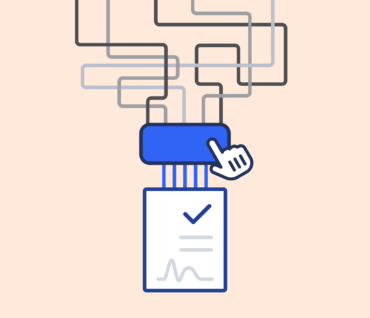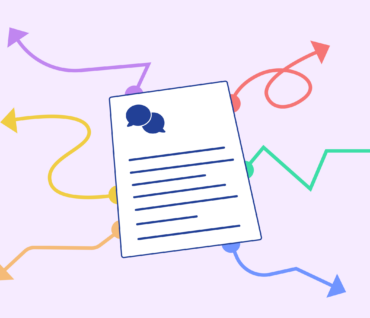
Get Started
Graphite's supplier management tool helps you onboard faster, cut time on risk reviews and streamline supplier validations. Save time and money.
February 16 2022
Top 10 Procurement Questions Your Team Should Be Able to Answer
As a procurement professional, it’s up to you to walk into a conversation armed with meaningful data that offers value and helps stakeholders achieve their overall objectives and questions.
Too often, procurement is viewed as a bottleneck in a tangle of corporate bureaucracy. You’ve got to show up in a way that proves you’re there to support your stakeholders’ objectives.
Being able to go into a meeting backed with insightful business intelligence is a powerful way to build credibility and help stakeholders achieve their goals. But you need access to clean, quality data in order to answer any potential procurement questions. “All procurement systems are built on some kind of data,” says Conrad Smith, CEO of Graphite. “Not having good data in place means you don’t have good results.”
Right away, if you’re armed with this crucial information, you can show stakeholders:
- Who their suppliers are
- Where they’re spending the most money
- Where there’s an overlap of suppliers
Strategic business leaders will immediately ask you these types of procurement questions. If you can’t answer them, you’ll end up looking incompetent and losing credibility. And internal credibility is massively impactful and valuable to the overall procurement results you’re trying to achieve.
But a lot of procurement teams don’t do a good job at answering these basic inquiries.
Can your data workbench answer these procurement questions?
The following procurement questions provide the framework for a meaningful discussion with every business stakeholder. You and your most experienced people may already be doing this anyway. By empowering your novice sourcing members with business intelligence that easily answers these questions, your entire procurement team will build value and credibility:
1. What’s your total spend?
This question is a great starting point, a launchpad if you will, for understanding the entire procurement process. When you consider the total spend, it automatically brings up new procurement questions related to what contributes to that total spend.
2. What is the total spend roll up to any leader (organization), or cost center (department/team)?
The next procurement question is designed to see the distribution of the cost within an organization or team. The answer to this procurement question will have a strong bearing on budgeting for individual departments and large institutions.
3. Who are the top suppliers who make up the spend?
The objective of this question is to identify the group of suppliers that are receiving the largest chunk of the budget that an organization or team has. The identification of this group is a way to prioritize the most important suppliers in procurement. Individual allocations will also be important but that is something that will be addressed with the next question.
4. How much is being spent with those suppliers? (both within that department and company-wide)
Now that you know the total spend and how the spend is split within organizations and teams, it is time to see where all that money is going. This means understanding which suppliers are being allocated most of that funding.
5. What are we buying from those suppliers?
While focusing on organizations, departments, and suppliers is important, it is also crucial to look at the items or services that are being procured. This is what this procurement question is for.
6. Are we buying this good/service from other suppliers? If so, ask whether the redundancy in this space is actually adding value or not.
Once you look at the most important products and services being acquired, you want to look at alternatives. The best way to do this is to figure out whether the same product or service is being acquired from other sources and if there are ways of consolidating such contracts.
7. What are the stakeholder priorities and objectives?
Understanding the objectives of the stakeholders i.e. the organization or department with respect to the product or services being acquired is an important part of analyzing the procurement process too. It allows priorities to be realized and adds context to the entire exercise.
8. Where are the top opportunities to bring additional value to this spend?
Now that the procurement team has all the information from answering the earlier procurement questions, it is time to identify opportunities for improvement in the procurement process. This question is designed exclusively for that purpose.
9. Are there any other teams using the same supplier(s)? If so, there may be an opportunity for cross-company collaboration on deals or suppliers.
Smith explains, “What if by consolidating thousands of individual accounts into two or three enterprise accounts, you were able to save 30-40% on your supplier bill? Imagine saving 30% on $100,000,000. That’s a huge savings just by doing some very basic stuff.”
10. Are there any procurement challenges or issues associated with these suppliers?
The final procurement question will allow you to recognize procurement challenges, issues, and risks associated with the suppliers you’re considering. This can then be matched with the opportunities that were identified earlier and balanced out, if possible.
Procurement questions every procurement team should answer: Summary
If you can answer all of these procurement questions and then tie it back to what your stakeholders are trying to accomplish, you’ll be a superstar in their eyes. Again, it comes back to what the data reveals about these opportunities. That’s what procurement should be talking to business leaders about. Aaron Oyler, Chief Product Officer of Graphite says, “He or she with the best data always wins, whether in terms of a negotiation or just looking good.”
Even if you’re sending your newest procurement team members into meetings, they’ll perform well and add value at a very high level if you’ve enabled them with quality data and a standard process to answer any potential procurement questions.





